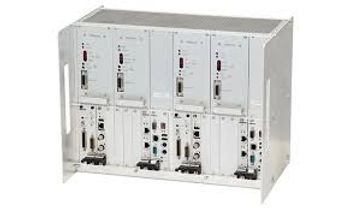
Utility Solar Catches Fire
SOLAR HAS DISPLACED WIND AS THE RENEWABLE OF CHOICE IN NEW-BUILD PROJECTS, GAINING MORE PROJECT DOLLARS THAN GAS-FIRED GENERATION
The annual Solar Power International (SPI) 2014 show took place in October in Las Vegas. Almost 20,000 attendees and nearly 700 exhibitors demonstrated that the industry is in the midst of a boom. So much so that solar has displaced wind as the renewable of choice in new-build projects, gaining more project dollars currently than those allotted to new gas-fired generation.
While home solar installations in the U.S. continue to experience growth, it is in the utility sector that the biggest progress is being made (Figure 1). The Solar Electric Power Association (SEPA) named the Top ten American electric utilities that in 2013 added the most new solar power to their systems and the most solar on a watts-per-customer basis. Combined, these ten accounted for 82% of all capacity in 2013, up from 73% in 2012.
The top three were Pacific Gas and Electric Company (PG&E), San Diego Gas and Electric Company (SDG&E), and Arizona Public Service (APS). Following them were Southern California Edison (SCE), Duke Energy Progress, National Grid, Public Service Electric and Gas Company (PSE&G), Hawaiian Electric Company, Georgia Power, and Duke Energy Carolinas.
“We are firmly committed to renewable energy and solar is a vital part of California’s energy mix,” said Steve Malnight, PG&E’s Vice President of Customer Energy Solutions.
Leading the Solar Watts-Per-Customer rankings was Sterling Municipal Light Department (SMLD), a public power utility in Massachusetts that serves 3,700 customers. Following Sterling was SDG&E, Silicon Valley Power, APS, Hawaiian Electric Company, PG&E, Hawaii Electric Light, Maui Electric Company, Kauai Island Utility Cooperative (KIUC) and Imperial Irrigation District (IID).
Meanwhile, Georgia Power is slated to add more than 1,400 MW of renewable resources by 2016. “Georgia Power’s ability to develop a significant portfolio of solar projects at affordable prices should be a model for utilities everywhere,” said Julia Hamm, President and CEO of SEPA (Figure 2). “Competitive solar is here today.”
Figure 1: The Ivanpah Solar Electric Generating System about 40 miles from Las Vegas[/caption]
SEPA recently took 30 utility executives to Europe to meet with German utility representatives. The goal was to shift their focus from immediate financial returns onto the longer-term strategic and financial implications of adding renewables to the grid.
“Even with the progress utilities have made with solar in the past couple of years, it won’t be enough without major change,” said Hamm. “There are still conflicts between solar and utility interests due to old rules and old markets models.”
As more solar gets added to the grid, the problem of storing the sun’s energy becomes ever more critical. That’s why the U.S. Department of Energy (DOE) has awarded a company called Solar Grid Storage a grant of almost $1 million as part of the DOE’s SunShot Initiative Incubator program. This was announced by Energy Secretary Ernest Moniz during his keynote at SPI.
Solar Grid Storage is charged with the development of a Solar Storage Operations Center to address the needs of managing grid-connected photovoltaic (PV) and various storage assets. “We’re focused on taking the solar industry to the next level, which requires cost-effective addition of energy storage,” said Solar Grid Storage CFO Dan Dobbs. “With the award, we will be able to aggregate various-sized storage systems into larger virtual-energy assets, making them more valuable for grid operators who call on them to balance power on the grid.”
Declaration of war
But Rhone Resch, CEO and President, Solar Energy Industries Association (SEIA), cautioned the audience about complacency during his keynote. In fact, he urged the industry to go to war to avoid the fate that recently befell wind power.
The wind sector went from installing a record of almost 14 GW of wind turbines in 2012 to erecting only one in the first half of 2013 and 1 MW for the year. Some 30,000 jobs were lost to that industry as companies cut back and factories closed. The production tax credit for wind and other renewable energy technologies expired at the end of 2013.
Solar currently enjoys a 30% investment tax credit (ITC) and SEIA has noticed a groundswell of support among those that want to end the ITC once and for all. That is why Resch called upon his members to get more active and effective in campaigning for the extension. We are in a high stakes poker game and the winner takes all,” said Resch. “If it could happen to wind, it can happen to solar. You could lose your job if you don’t act.”
This all comes against a backdrop of solar racking up its biggest deployments ever. According to SEIA, the past two years have seen more solar installed in the U.S. than in the previous 38 years combined. Resch said more than 90% of Americans support more solar and that the industry now contributed $20 billion a year to the country’s economy.
Across the U.S, cumulative solar photovoltaics (PV) and concentrating solar power (CSP) operating capacity is now greater than 16 GW. According to GTM Research and SEIA, the U.S. installed another 1,133 MW of PV in the second quarter of 2014. The residential and commercial segments accounted for nearly half of all solar PV installations in the quarter.
Figure 2: Julia Hamm during her keynote[/caption]
Since the ITC went into effect in 2006, solar investment has exploded. Solar installations in 2014 will be 70 times higher than they were in 2006, and by the end of this year, there will be nearly 30 times more installed solar capacity. There are also more than 143,000 Americans currently employed by the industry, said Resch.
“We’ve gone from being an $800-million industry in 2006 to a $15-billion industry today,” Resch continued. “The price to install a solar rooftop system has been cut in half, while utility systems have dropped by 70%. It’s taken the U.S. solar industry 40 years to install the first 20 gigawatts (GW) of solar. Now, we’re going to install the next 20 GW in the next two years.”
Newsletter
Power your knowledge with the latest in turbine technology, engineering advances, and energy solutions—subscribe to Turbomachinery International today.




